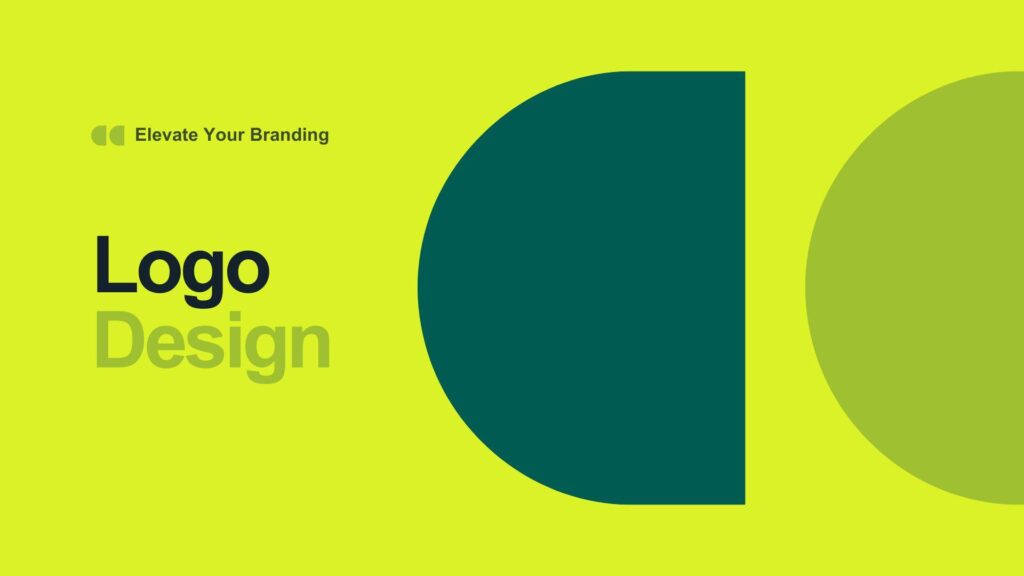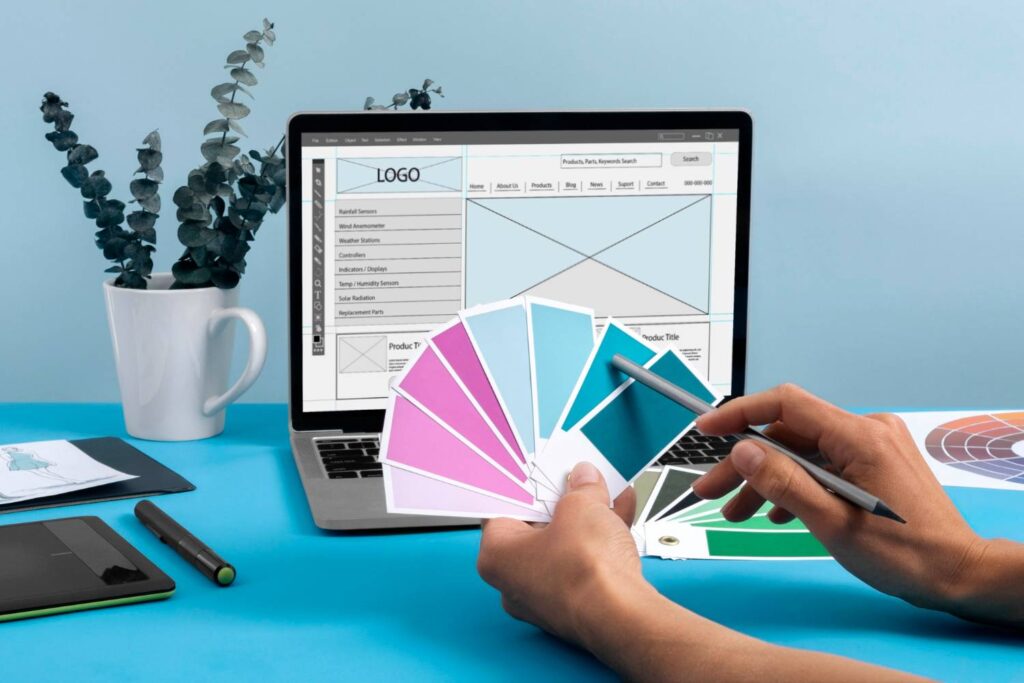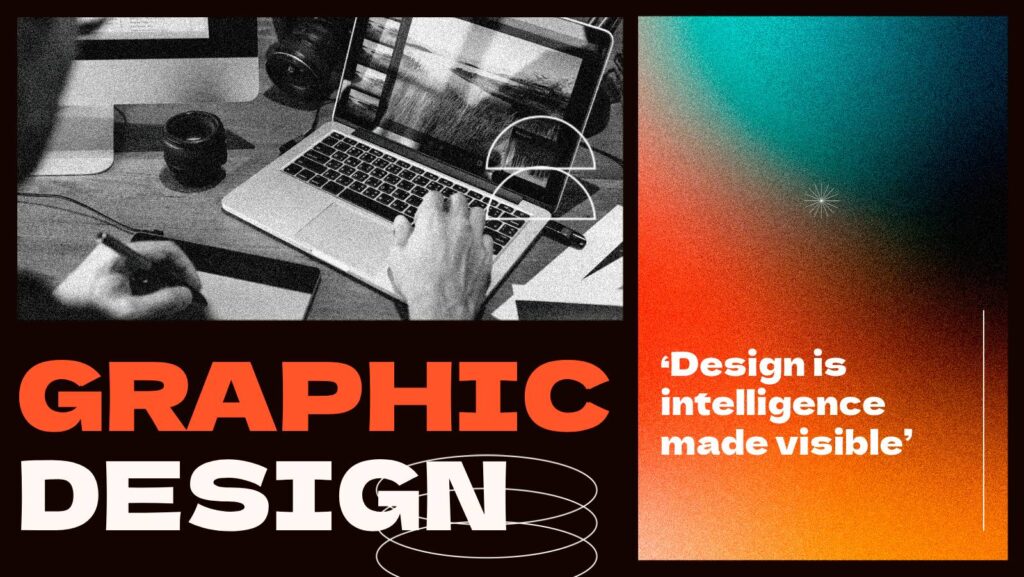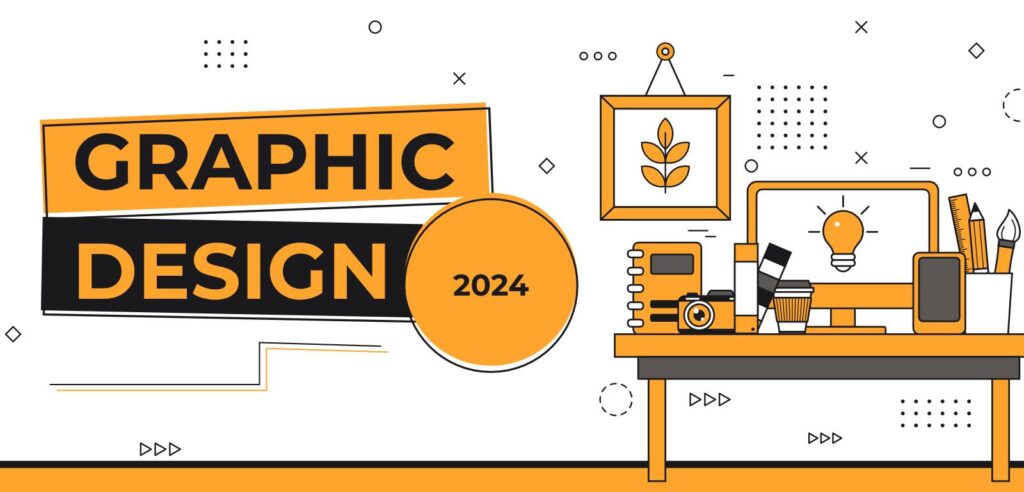Logo design is far more than creating an attractive symbol — it’s about defining a brand’s face, identity, and emotional resonance in a single visual mark. At our studio, we’ve had the privilege of designing logos for a wide range of clients, including high-value brands across industries. Through years of hands-on experience, we’ve identified key practices that separate good logos from great ones.
Whether you’re building your first brand identity or refining your approach as a seasoned designer, these 10 professional logo design strategies will help elevate your creative outcomes and deliver more meaningful, memorable, and effective branding.
1. Begin in Black and White
Color is powerful — but in the early stages of logo design, it can also become a distraction. Starting in black and white forces designers to focus on form, clarity, and structure rather than relying on visual embellishments to carry the concept.
By stripping away color, you test the core strength of the logo. A well-constructed black-and-white mark ensures that the design holds up at all sizes and across all mediums, from business cards to billboards. Once the foundational design works in monochrome, introducing color becomes a way to enhance — not compensate for — the concept.
2. Understand That a Logo Is a Symbol, Not a Storybook
Many believe a logo must communicate everything about the company — its services, products, and personality. This leads to cluttered, overcomplicated marks. In truth, a logo is a symbol — a visual cue that represents the essence of the brand.
The Apple logo is a great example. It doesn’t sell apples — it stands for innovation, simplicity, and design excellence. Focus on capturing values and spirit, not a product catalog. Avoid the temptation of obvious metaphors and explore more abstract or conceptual representations when possible.
3. Master the Art of Kerning
Kerning — the adjustment of space between letters — is a critical detail that separates amateur typography from professional logo types. Especially in custom wordmarks or logotypes, precise kerning ensures visual balance and harmony.
Using design tools like Adobe Illustrator, designers can manually refine kerning using shortcut keys to push or pull letter spacing. Well-kerned type feels tight, intentional, and legible — essential qualities in logo design where every pixel counts.
4. Avoid Online Inspiration Too Early
Pinterest, Behance, and Google are valuable sources of design inspiration — but using them too early can hinder originality. Designers often unconsciously replicate existing styles or trends they’ve just seen, resulting in derivative work.
Instead, begin by sketching at least 20 ideas independently. Once you’ve explored a wide range of concepts on your own, you can browse existing work to assess trends, explore gaps, and draw inspiration — without risking plagiarism or creative dependency.
5. Embrace the “20 Sketch Rule”
Some of the most unique logo ideas arise after the obvious ones. Most designers produce safe, generic ideas in their first five sketches. Pushing past this creative threshold is where innovation begins.
Commit to sketching 20 different concepts. It’s not just a numbers game — it’s a mental exercise that helps shed clichés and deepen creative thinking. Even if many ideas are discarded, the process often leads to one or two golden concepts that would’ve never surfaced otherwise.
6. Present Your Logo with a Story, Not Just a File
Clients don’t just buy a logo — they buy into a vision. Presenting a logo on a plain background without explanation can undercut its value, no matter how well designed. Instead, walk your client through the rationale, meaning, and real-world applications.
Use branded mockups (e.g. signage, packaging, app icons) and explain how every decision — from color to shape — reflects the client’s brand identity. When clients see their logo in context, they’re more likely to understand its impact and feel confident in your solution.
7. Use the Noun Method for Stronger Concepts
The “noun method” is a simple but effective brainstorming technique: identify two or more core nouns from the brand’s name or story, and combine them visually. This method is particularly useful for turning abstract ideas into tangible visual elements.
For example, if designing a logo for an African tea brand named Meow, the key nouns might include: Africa, tea, meow, cat. Break each down to its most basic shape or symbol. Experiment with blending these elements — the result can be a unique, meaningful, and layered logo that reflects multiple brand dimensions without being too literal.
8. Refresh Your Creativity by Changing Your Environment
Creative burnout is real — and often, the best way to break through it isn’t more screen time, but a change of scenery. Exposure to new environments, textures, and cultures can inspire unexpected ideas.
While international travel can be transformative, even switching workspaces — from a home studio to a café or co-working space — can offer new visual stimuli. Creative thinking thrives in dynamic environments, so stay open to shifting perspectives and routines to fuel fresh ideas.
9. Learn and Apply Overshooting for Optical Balance
In typography and logo design, overshooting refers to slightly enlarging curved letters (like O or S) so they visually align with flat characters (like X or H). Although technically larger, the curves appear the same size to the human eye.
Understanding this optical illusion is critical when designing custom letterforms or logotypes. Fonts built by professionals always include overshooting — and your logos should too. These subtle refinements bring polish and visual balance to your final design.
10. Always Check for Originality and Availability
One of the biggest risks in logo design is unintentionally creating something that resembles an existing trademark. No matter how original your process feels, it’s essential to check your final logo for similarities using tools like Google Image Search, Google Lens, or brand databases.
This step can save you — and your client — from legal disputes, reputational harm, or costly rebranding down the line. A quick image search can catch accidental overlaps before they become problems. Diligence here is a must.
Final Thoughts
Logo design is a layered, strategic process that blends creativity with technical precision. The most impactful logos aren’t just beautiful — they’re thoughtful, functional, and relevant to the brand they represent.
By applying these 10 professional tips — from working in black and white, to sketching extensively, telling compelling stories, and checking availability — you can elevate your branding process and build logos that truly stand the test of time.
Whether you’re a creative agency, freelance designer, or part of an internal brand team, these practices will help produce stronger, smarter, and more successful visual identities.
Frequently Asked Questions (FAQ)
Q1: Why should I start designing logos in black and white?
Starting in black and white helps you focus on the core shape and concept of the logo without distractions from colour. It ensures your design is simple, versatile, and works well at any size or medium.
Q2: How many logo concepts should I sketch before choosing the best one?
Sketch at least 20 concepts. This forces you to explore multiple ideas beyond the initial clichés, increasing the chance of creating a unique and effective logo.
Q3: What is kerning and why is it important in logo design?
Kerning is the adjustment of spacing between individual letters. Proper kerning makes the logo type look balanced, professional, and visually appealing.
Q4: How can I avoid copying logos I find online?
Avoid looking at online logos too early in your process. If you do seek inspiration, combine elements from multiple logos instead of copying one directly. Always create original work and check for logo availability before finalizing.
Q5: What tools can I use to check if my logo is already taken?
You can use Google’s global brand database with the “search by logo” feature, Google Lens, Shutterstock image search, and trademark databases to verify if your logo or similar designs are already registered.
Q6: What is the noun method and how does it help in logo design?
The noun method involves identifying two key nouns from the client’s brief and exploring ways to combine their visual elements. This technique encourages creativity and helps generate unique logo concepts.
Q7: How does changing my work environment affect creativity?
Changing your environment stimulates your brain by exposing you to new sights and experiences, which can refresh your perspective and help overcome creative blocks.
Q8: What is overshooting in typography?
Overshooting is the optical adjustment where curved letters are made slightly larger to appear visually balanced next to flat letters. It ensures harmonious and pleasing letterforms in logos and typefaces.
Quick Links:
https://duogeeks.com/
https://duogeeks.com/services/graphic-design-company/
https://duogeeks.com/services/website-design/



